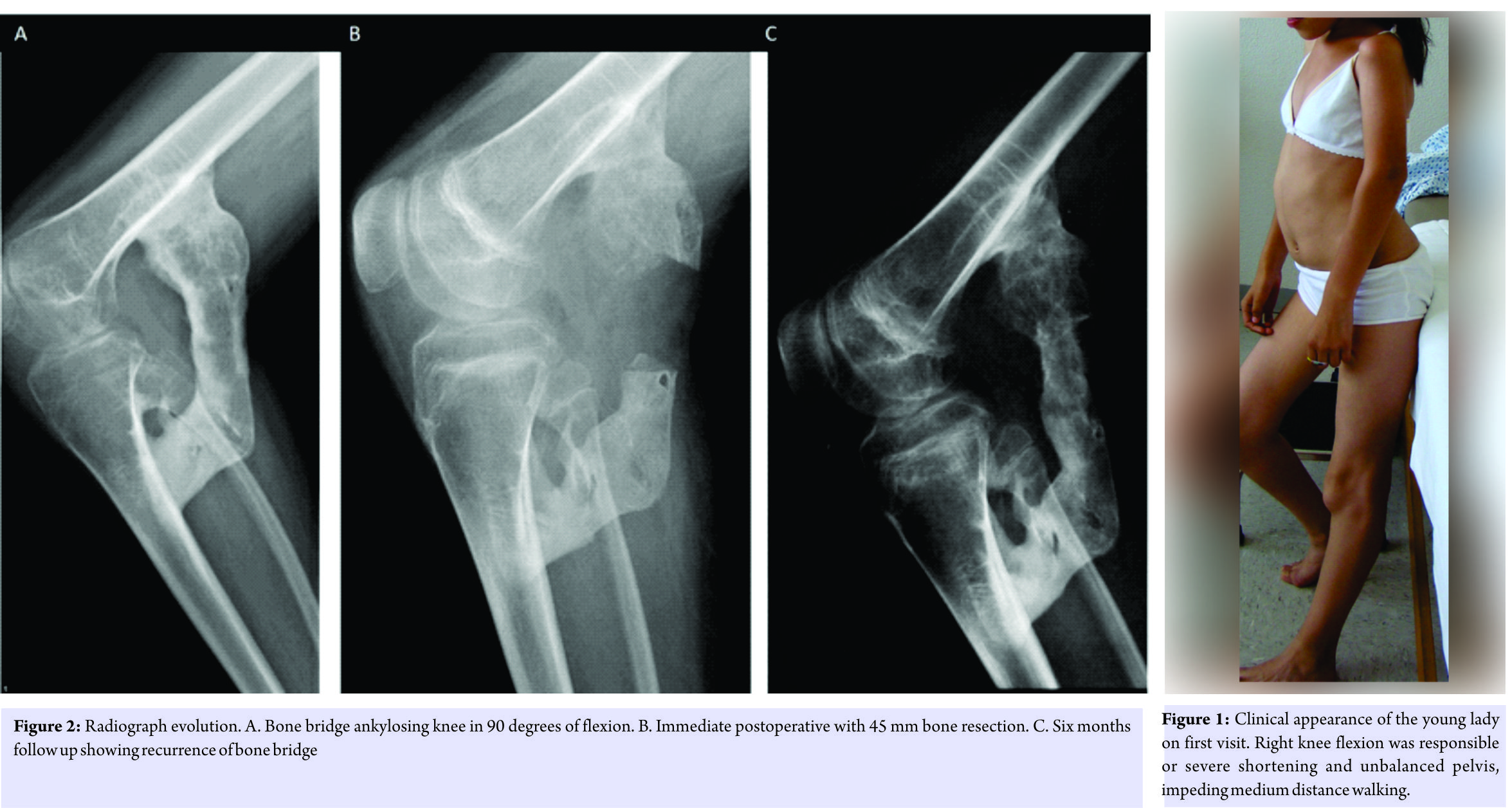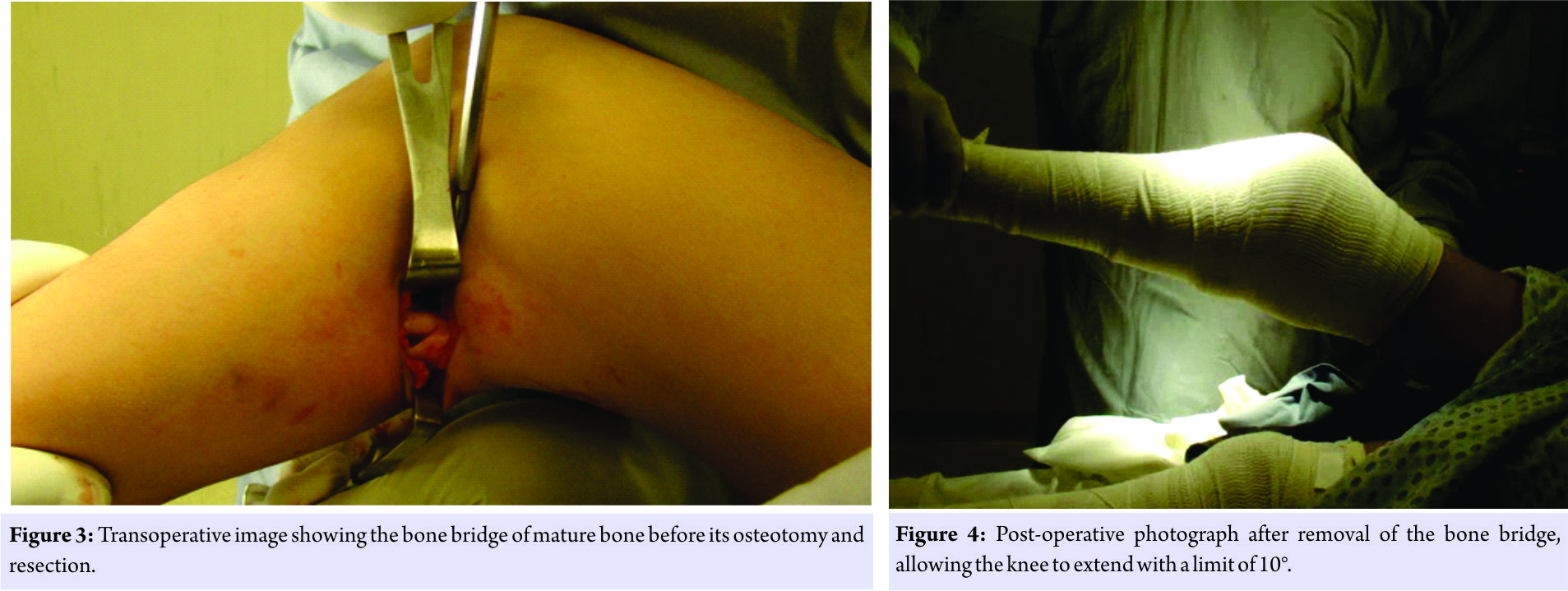[box type=”bio”] Learning Point for this Article: [/box]
Traumatic dislocation of the proximal tibiofibular joint may present with ongoing instability following reduction, and can be treated effectively with a single cortical screw.
Case Report | Volume 8 | Issue 1 | JOCR Jan – Feb 2018 | Page 93-95| Alan W Reynolds, Suneel B Bhat, Justin D Stull, James C Krieg. DOI: 10.13107/jocr.2250-0685.1016
Authors: Alan W Reynolds[1], Suneel B Bhat[2], Justin D Stull[3], James C Krieg[3]
[1]Department of Orthopaedics, Pennsylvania State University, Hershey, Pennsylvania,
[2]Department of Orthopaedics, Sentara Norfolk General Hospital, Norfolk, Virginia, USA.
[3]Department of Orthopaedics, Rothman Institute at Thomas Jefferson University, Philadelphia, Pennsylvania.
Address of Correspondence:
Dr. James Krieg,
Rothman Institute, 935 Chestnut St. Fifth Floor, Philadelphia – 19107, Pennsylvania.
E-mail: James.Krieg@rothmaninstitute.com
Abstract
Introduction: Dislocations of the proximal tibiofibular joint are an uncommon injury but have been reported in a variety of different athletes. Treatment and rehabilitation of these cases have ranged significantly across the reported cases.
Case Report: The present case describes a 23-year-old male professional hockey player who suffered an isolated anterior dislocation of the proximal tibiofibular joint. Spontaneous reduction occurred several days following the injury; however, instability and subluxation continued and screw fixation was required. Ultimately the patient returned to competition at a professional level 3 months following the injury.
Conclusion: The case illustrates the possibility of persistent instability of an isolated proximal tibiofibular joint injury, and also the successful treatment of this by fixation with a single screw. This fixation proved to alleviate pain and allow for a return to weight-bearing activities and professional athletic competition.
Keywords: Ice hockey, internal fixation, proximal tibiofibular dislocation.
Introduction
Dislocations of the proximal tibiofibular joint are rare injuries and have been most commonly described in athletes. Case reports have detailed these injuries most commonly in soccer players, but also in basketball, rugby, dancing, long jump, snowboarding, hiking, and three-legged races [1, 2, 3, 4, 5, 6, 7]. The most common type of dislocation is a Type II dislocation based on the Ogden classification or an anterior-lateral dislocation of the fibular head relative to the tibia [8]. The mechanism of this injury is a rotational force to the leg with a flexed knee and the foot inverted and extended [9].
Reduction often occurs spontaneously due to a posterior force of the biceps femoris on the fibular head when the knee is flexed, usually accompanied by an audible clunk and immediate relief of pain. Cases that do not reduce spontaneously can usually be reduced by closed maneuvers, and only in rare cases require open reduction and internal fixation (ORIF). Reports of post-injury strategies for immobilization and return to activities vary widely; however, almost all approaches have been reported to have excellent outcomes.
Case Report
A 23-year-old male professional hockey player suffered a fall on ice during a game, which resulted in a flexion-external rotation injury to his left lower extremity. At the time, he felt a pop and developed immediate onset of the left knee pain. Plain films and magnetic resonance imaging (MRI) revealed anterior dislocation of the proximal tibiofibular joint (Fig. 1). The patient had subsequent spontaneous reduction while entering a car the following day. 3 days after injury, the patient had persistent the left knee pain and difficulty with the range of motion to terminal flexion and extension and presented to clinic. At presentation, the patient was unable to comfortably bear weight on the extremity. On examination, he had tenderness to palpation at the fibular head but no tenderness over the ankle. His left knee had a range of motion comfortably from 10 to 90° and full strength in all muscle groups, as well as intact sensation in all nerve distributions in the lower extremity.
Initially, the patient elected for non-operative treatment and was advised to remain non-weight-bearing for 1 week followed by a repeat MRI. This study revealed a small amount of lateral subluxation of the left fibular head. At this point, the patient had persistent pain and difficulty with extension, and so elected to undergo surgical treatment.
12 days after injury, the patient underwent ORIF of the proximal tibiofibular joint. The joint was noted to be resting in a laterally subluxed position. It was manually reducible but unstable (Fig. 2). A single 3.5 mm cortical lag screw was inserted from the fibula to the tibia parallel to the knee joint, after which the joint remained anatomically reduced.
Postoperatively, the patient remained non-weight-bearing with passive range of motion limitations for 4 weeks, after which weight-bearing and active range of motion were allowed. At 8 weeks, his physical examination included minimal edema about the head of the fibula; active range of motion from 0° to 135° without pain and equal to the contralateral side; and no instability or pain with stress applied to the syndesmosis. He resumed hockey practice after 8 weeks and resumed competition 3 months following the injury. At 5½ months, the patient had minimal leg pain only with push off and the screw was removed to allow for return of physiologic motion (Fig. 3).
Discussion
This case illustrates the rare occurrence of an isolated proximal tibiofibular dislocation, and the first reported case in a professional athlete while ice skating. The mechanism of the injury was typical for this type of dislocation, as has been previously reported and described, with a rotational force to a flexed knee.
Spontaneous reduction of the dislocation was consistent with prior reports; however, in this case, the persistence of instability and joint incongruity resulted in operative management. Previous case reports have used differing techniques, including open reduction with no fixation, fixation with bioabsorbable pins, and fixation with a single temporary K wire or cortical screw [1, 2, 3, 5, 6]. Other reports have also discussed anatomic reduction by reconstruction of ligaments [10]. In the present case, fixation with a single transcortical screw that was removed after 5½ months provided excellent reduction and return to prior level of function. A short period of non-weight-bearing followed by strengthening and allowed the athlete to return to full unrestricted professional competition 3 months after the initial injury. This post-operative progression is similar to that of other high-level athletes including a report by Burke et al. of a soccer player, and MacGiobain et al. of a professional rugby player. Our experience suggests that reduction and operative management of unstable tibiofibular dislocations in professional athletes can be successful, and return the player to their previous level of competition.
Conclusions
Isolated dislocation of the proximal tibiofibular joint is a rare injury, most commonly seen in athletes due to an external rotation force on a flexed knee. While often times, these may spontaneously reduce, residual instability can persist, which can be effectively be treated by fixation with a single screw.
Clinical Message
Traumatic dislocation of the proximal tibiofibular joint may present with ongoing instability following reduction, which can be treated effectively with a single cortical screw.
References
1. Ahmad R, Case R. Dislocation of the fibular head in an unusual sports injury: A case report. J Med Case Rep 2008;2:158.
2. Burke NG, Robinson E, Thompson NW. An isolated proximal tibiofibular joint dislocation in a young male playing soccer: A case report. Cases J 2009;2:7261.
3. MacGiobain S, Quinlan JF, O’Malley N, Brophy D, Quinlan WR. Isolated proximal tibiofibular joint dislocation in an elite rugby union player. Br J Sports Med 2008;42:306-7.
4. Parkes JC 2nd, Zelko RR. Isolated acute dislocation of the proximal tibiofibular joint. Case report. J Bone Joint Surg Am 1973;55:177-83.
5. Rajkumar P, Schmitgen GF. A new surgical treatment of an acute dislocation of the proximal tibiofibular joint. Int J Clin Pract 2002;56:556-7.
6. Robinson Y, Reinke M, Heyde CE, Ertel W, Oberholzer A. Traumatic proximal tibiofibular joint dislocation treated by open reduction and temporary fixation: A case report. Knee Surg Sports Traumatol Arthrosc 2007;15:199-201.
7. Van Seymortier P, Ryckaert A, Verdonk P, Almqvist KF, Verdonk R. Traumatic proximal tibiofibular dislocation. Am J Sports Med 2008;36:793-8.
8. Ogden JA. Subluxation and dislocation of the proximal tibiofibular joint. J Bone Joint Surg Am 1974;56:145-54.
9. Falkenberg P, Nygaard H. Isolated anterior dislocation of the proximal tibiofibular joint. J Bone Joint Surg Br 1983;65:310-1.
10. van den Bekerom MP, Weir A, van der Flier RE. Anatomic reconstruction or temporary screw stabilization of chronic symptomatic anterolateral proximal tibiofibular joint instability. Knee Surg Sports Traumatol Arthrosc 2011;19:1406-7.
 |
 |
 |
 |
| Dr. Alan W Reynolds | Dr. Suneel B Bhat | Dr. Justin D Stull | Dr. James C Krieg |
| How to Cite This Article: Reynolds AW, Bhat SB, Stull JD, Krieg JC. Case Report of an Isolated Proximal Tibiofibular Joint Dislocation in a Professional Ice Hockey Player. Journal of Orthopaedic Case Reports 2018 Jan-Feb;8(1):93-95. |
[Full Text HTML] [Full Text PDF] [XML]
[rate_this_page]
Dear Reader, We are very excited about New Features in JOCR. Please do let us know what you think by Clicking on the Sliding “Feedback Form” button on the <<< left of the page or sending a mail to us at editor.jocr@gmail.com




